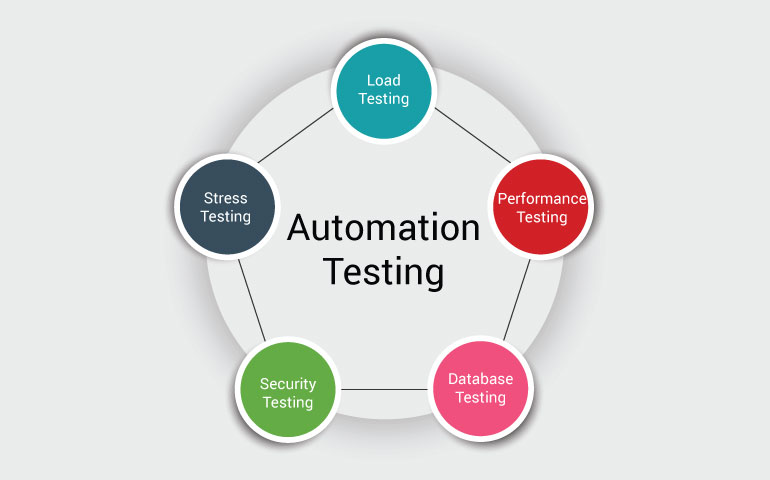Reliable Automation Testing: Enhancing Software Application Integrity and Speed
Reliable Automation Testing: Enhancing Software Application Integrity and Speed
Blog Article
From Guidebook to Automated Testing: A Comprehensive Guide to Transitioning Efficiently and Efficiently
In the world of software application screening, the shift from handbook to automated processes has actually become a significantly important change for organizations seeking to enhance efficiency and precision in their screening methods. As innovation remains to advancement, the need for seamless and effective computerized testing approaches has never ever been more important. The trip from manual to automated testing is not without its difficulties, but when come close to purposefully and with a clear plan in mind, the benefits can be substantial - automation testing. In this comprehensive overview, we will check out key actions and factors to consider essential for a successful shift, from the initial choice of devices to the integration of automation into existing workflows. Stay tuned to uncover the understandings that will assist lead the way for a smoother and more efficient testing process.
Advantages of Automated Examining
Automated screening uses many benefits, enhancing performance and accuracy in software application advancement processes. Automated tests can be run simultaneously on multiple devices and operating systems, substantially speeding up the testing phase contrasted to hands-on testing.
In addition, automated screening makes certain a greater level of accuracy in discovering flaws. Uniformity in testing is also boosted, as automated examinations perform the exact same steps specifically each time they are run.
Selecting the Right Devices

Firstly, examine your demands and goals. Recognize the scope of your task, the innovations involved, and the capability of your team. This evaluation will certainly help you figure out the features and capacities you call for in your testing devices.
Secondly, consider the compatibility of the devices with your existing systems and processes. Smooth assimilation with your existing software program advancement lifecycle is vital to make sure a smooth shift to automation.
Additionally, review the scalability and flexibility of the devices. As your screening needs evolve, the devices should be able to adapt and suit adjustments successfully.
Finally, aspect in the assistance and area around the devices. When carrying out automated testing, robust assistance and an energetic user community can give important resources and help. By very carefully taking into consideration these aspects, you can pick the right devices that align with your requirements and set the phase for an effective transition to automated screening.
Writing Reliable Examination Manuscripts

When crafting examination manuscripts, it is vital to think about the specific requirements of the software application being examined and make sure that the manuscripts attend to all essential performances. Clear and detailed calling conventions for test manuscripts and examination cases can boost readability and maintainability. Furthermore, integrating error handling systems within the test scripts can aid in determining and resolving problems promptly.
Furthermore, arranging examination manuscripts into modular elements can enhance reusability and scalability, minimizing redundancy and improving performance in examination script maintenance. Normal reviews and updates to test manuscripts are critical to equal advancing software application demands and functionalities. By following these concepts, testers can develop robust and reliable examination scripts that add dramatically to the success of automated screening procedures.
Integrating Automation Into Workflows
By perfectly incorporating automated testing devices like Selenium or Appium into the check this software program advancement lifecycle, groups web link can achieve faster comments on code modifications, leading to quicker bug detection and resolution. This assimilation permits for continuous testing throughout the development procedure, making sure that any type of concerns are identified early on, resulting in greater software program top quality. Correct assimilation of automation tools requires collaboration in between development, testing, and operations teams to develop a unified process that maximizes efficiency and performance in delivering top quality software program items.
Making Certain a Smooth Shift
Effectively transitioning to automated testing entails precise preparation and mindful execution to optimize and minimize disruptions performance in the software application advancement process - automation testing. To make sure a smooth change, it is necessary to begin by carrying out a complete evaluation of the present testing procedures and identifying areas where automation can bring one of the most considerable benefits. Engaging with all stakeholders early in the process, consisting of developers, testers, and job managers, is essential for amassing assistance and buy-in for the automation campaign
Interaction is key throughout this transition stage. Clear interaction of the objectives, advantages, and assumptions of automated screening helps to take care of any kind of resistance or concerns that may develop. Furthermore, giving sufficient training and resources for group participants to upskill in automation tools and techniques is vital for ensuring an effective change.

Verdict
In conclusion, transitioning from manual to automated testing offers various benefits, including enhanced efficiency and integrity. By selecting the appropriate devices, composing efficient examination manuscripts, and integrating automation perfectly into workflows, organizations can make certain a smooth and see this page successful transition. It is necessary to accept automation as an important asset in software application testing procedures to improve general high quality and performance.
In the realm of software screening, the change from handbook to automated processes has actually ended up being a significantly important shift for organizations seeking to enhance efficiency and precision in their screening techniques. Automated tests can be run simultaneously on several tools and operating systems, substantially speeding up the screening phase compared to hand-operated screening. Consistency in testing is also enhanced, as automated tests implement the exact same actions specifically each time they are run.To guarantee the successful application of selected testing devices, the development of efficient test scripts plays a vital duty in verifying the capability and efficiency of automated processes - automation testing. By following these principles, testers can produce reliable and robust examination scripts that add considerably to the success of automated testing processes
Report this page